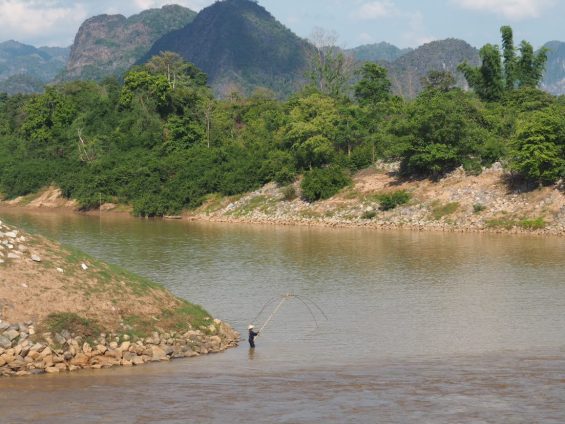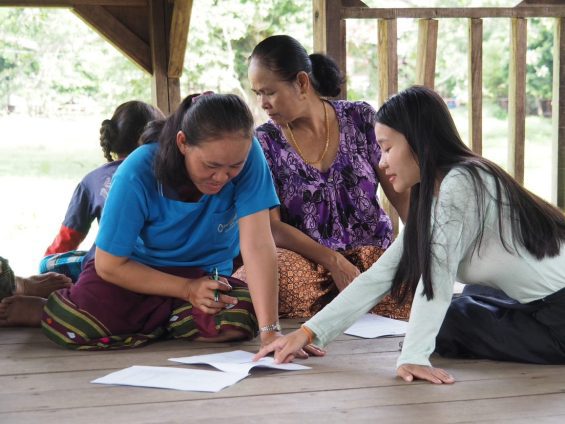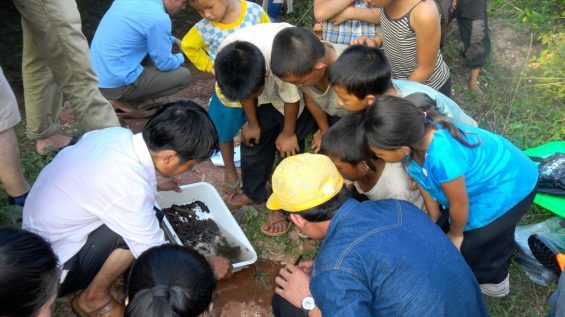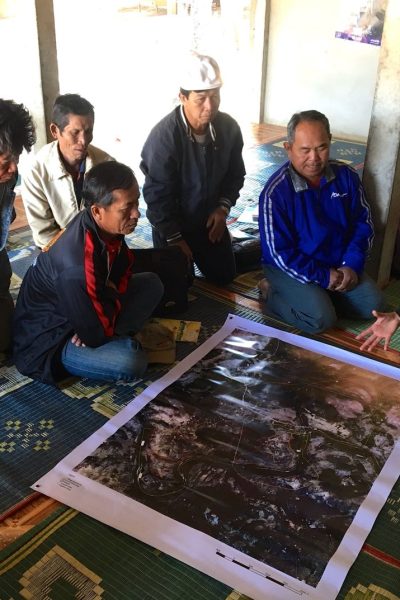
The community-based River Basin Management project is funded by The McConnell Foundation and implemented by The Asia Foundation (TAF) in Lao PDR, in collaboration with government of Lao PDR partners. Though this project began in 2021, it is a continuation of 10 years of collaboration on community-based water quality and management initiatives. These initiatives aim to increase biodiversity, mitigate flood hazards, and help communities build ownership and voice in the care of the water systems they depend on for health and livelihoods.
 Although Lao PDR is a Least Developed Country (LDC), it is rich in natural resources, especially water. River ecosystems in Lao PDR provide a range of benefits critical to people and wildlife, and healthy river systems are vital for Lao PDR’s socioeconomic development. However, rapid economic growth and increasing reliance on natural resource extraction in the country has put pressure on the environment, particularly the country’s water resources. Major issues contributing to the degradation of water resources include construction and operation of hydropower projects, mining operations, increasing use of agrochemicals, and inadequate municipal landfills leading to more waste entering waterways (Mekong River Commission, 2016; Chea et. al. 2016; Lida et. al. 2011). The increase in adverse effects caused by natural resource exploitation has been recognized by the Government of Lao PDR as a serious threat to the sustainable development of the country.
Although Lao PDR is a Least Developed Country (LDC), it is rich in natural resources, especially water. River ecosystems in Lao PDR provide a range of benefits critical to people and wildlife, and healthy river systems are vital for Lao PDR’s socioeconomic development. However, rapid economic growth and increasing reliance on natural resource extraction in the country has put pressure on the environment, particularly the country’s water resources. Major issues contributing to the degradation of water resources include construction and operation of hydropower projects, mining operations, increasing use of agrochemicals, and inadequate municipal landfills leading to more waste entering waterways (Mekong River Commission, 2016; Chea et. al. 2016; Lida et. al. 2011). The increase in adverse effects caused by natural resource exploitation has been recognized by the Government of Lao PDR as a serious threat to the sustainable development of the country.
 The Integrated Water Resource Management (IWRM) approach has evolved over the last two decades and encourages planning to holistically evaluate competing uses of water resources, to ensure that changes in water use in one area will not have a negative impact on water users downstream. The Lao Government has acknowledged the benefits of taking an IWRM approach. Due to a lack of human resources and capacity, the government has also indicated there is a lack of publicly available information on the impact of development on water resources, mitigation measures have been used, and their effectiveness.
The Integrated Water Resource Management (IWRM) approach has evolved over the last two decades and encourages planning to holistically evaluate competing uses of water resources, to ensure that changes in water use in one area will not have a negative impact on water users downstream. The Lao Government has acknowledged the benefits of taking an IWRM approach. Due to a lack of human resources and capacity, the government has also indicated there is a lack of publicly available information on the impact of development on water resources, mitigation measures have been used, and their effectiveness.
To address these needs in Lao PDR, The McConnell Foundation funded The Asia Foundation (TAF) to develop a water quality monitoring program in 2010. After the success of this flagship project, TAF wanted to move beyond monitoring to helping communities protect their water sources by applying an IWRM approach. In 2015, TAF received additional funding from The McConnell Foundation to initiate the Community-based Water Resource Management (CWRM) project, which was implemented in the Xe Bang Fai District in Khammouane province, about 130 km downstream from the Nam Theun 2 Hydropower development project. This project is in collaboration with the national Ministry of Natural Resources of Environment (MoNRE) and their provincial counterparts (PoNRE) in Khammouane province.
 The CRBM project has three primary components: 1) capacity building for the government of Laos (provincial, district and village level) and communities to identify the information and criteria needed for river basin management, collect data on these criteria, and use the data as part of a transparent and equitable river basin planning and management approach; 2) increased public participation in the development of local water management by linking communities, local government, and civil society members as part of a Healthy River Network; and 3) support for the design and implementation of village-level water resources projects, such as wetland improvements, training on organic agriculture, improved waste management, and green infrastructure projects to build community resilience against climatic hazards and climate change. An innovative aspect to this third component is that TAF will train/mentor local water managers to integrate more green infrastructure solutions as a complement to existing and planned built (“grey”) infrastructure. This may include wetland enhancements, re-vegetating riparian zones, and using fences made from living trees and shrubs (live fencing) for riverbank erosion control.
The CRBM project has three primary components: 1) capacity building for the government of Laos (provincial, district and village level) and communities to identify the information and criteria needed for river basin management, collect data on these criteria, and use the data as part of a transparent and equitable river basin planning and management approach; 2) increased public participation in the development of local water management by linking communities, local government, and civil society members as part of a Healthy River Network; and 3) support for the design and implementation of village-level water resources projects, such as wetland improvements, training on organic agriculture, improved waste management, and green infrastructure projects to build community resilience against climatic hazards and climate change. An innovative aspect to this third component is that TAF will train/mentor local water managers to integrate more green infrastructure solutions as a complement to existing and planned built (“grey”) infrastructure. This may include wetland enhancements, re-vegetating riparian zones, and using fences made from living trees and shrubs (live fencing) for riverbank erosion control.

Click below for more details on Citizen Science for wetland health:

Hydropower In Laos
In the last decade, the Southeast Asian region has enjoyed an accelerating economic boom, and the increasing demand for energy has resulted in hydropower returning to the development agenda in the Greater Mekong Subregion. In Lao PDR, one of the least developed countries in ASEAN, hydropower is viewed as an important source of income and a driving force for its economic growth; in 2018 hydropower along with mining accounted for 80% of Foreign Direct Investment (FDI). Lao PDR is primarily a mountainous country with major tributaries of the Mekong River, and about one third of the Mekong River basin is located within its borders. This geographical feature, together with the country’s relatively high annual rainfall, grants Lao PDR advantages in hydropower generation.
Although hydropower development in Lao PDR has often been framed with multiple socio-economic development benefits, it is becoming increasingly apparent that the focus on large, capital-intensive infrastructure projects, particularly hydropower projects, has significant adverse environmental and social impacts that are difficult to mitigate.
Some researchers have been studying the impacts of communities living downstream from Lao PDR’s largest dam, the Nam Theun 2 Hydropower Plant (NT2). You can read more about the NT2 hydropower project in Lao PDR in the following published papers:
The People and their River, the World Bank and its Dam: Revisiting the Xe Bang Fai River in Laos
For more information on The McConnell Foundation’s International Programs, please visit https://www.mcconnellfoundation.org/international/, or email the Director of International Programs, Jesica Rhone, on the sustainability page contact form.
